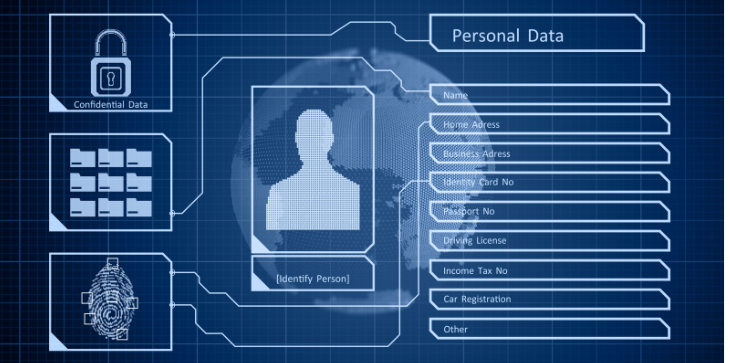The rapid evolution of digital technology has heightened the importance of cybersecurity globally. In Asia, a region characterized by diverse technological landscapes and booming economies, biometric authentication has emerged as a cornerstone of cybersecurity strategies. From securing financial transactions to enhancing national security, biometrics is redefining how individuals and organizations approach digital identity verification. This article explores the latest trends in biometric authentication, its relevance in Asia, and real-world applications that highlight its transformative potential.
The Rising Importance of Biometric Authentication
Biometric authentication uses unique biological traits such as fingerprints, facial recognition, iris scans, and voice patterns to verify identities. Unlike traditional methods such as passwords or PINs, biometric authentication offers greater security and convenience, as these identifiers are difficult to replicate or steal.
Key trends driving the adoption of biometric authentication globally include:
- Increased Cyber Threats: As cyberattacks become more sophisticated, organizations are turning to biometrics to strengthen security measures.
- Rise of Contactless Technologies: The COVID-19 pandemic accelerated the adoption of contactless solutions, making facial and voice recognition technologies more prevalent.
- Integration with AI and Machine Learning: Advanced algorithms enhance the accuracy and reliability of biometric systems, enabling real-time identity verification.
- Regulatory Support: Governments worldwide are enacting policies that promote secure digital ecosystems, further encouraging biometric adoption.
Asia’s Leadership in Biometric Cybersecurity
Asia is at the forefront of biometric innovation, with governments and private enterprises leveraging this technology to secure their digital environments. Key factors contributing to Asia’s leadership include:
1. Government Initiatives
Asian governments have implemented large-scale biometric projects to enhance national security and streamline citizen services. For instance:
- India: The Aadhaar system, the world’s largest biometric database, uses fingerprints and iris scans to authenticate over a billion citizens.
- China: Facial recognition technology is integrated into daily life, from mobile payments to public surveillance systems.
- Singapore: The government’s National Digital Identity program incorporates biometric authentication to provide secure access to e-government services.
2. Rapid Digitalization
Asia’s burgeoning digital economy, particularly in countries like Indonesia, Vietnam, and Thailand, is driving the need for robust cybersecurity measures. Biometrics is increasingly being adopted in sectors such as banking, healthcare, and e-commerce to secure transactions and protect sensitive data.
3. Investment in Innovation
Asian tech giants and startups are investing heavily in biometric research and development. Companies like Alibaba, Samsung, and NEC are pioneering advancements in facial recognition, voice authentication, and palm-vein technology.
READ ALSO : it support for manufacturing in thailand/
Study Case: Biometric Authentication in Southeast Asia’s Banking Sector
Example – Indonesia: In Indonesia, the government’s push for financial inclusion led to the adoption of biometric KYC (Know Your Customer) solutions by banks such as BRI and Bank Mandiri. These systems use fingerprint and facial recognition to verify identities, even in remote areas with limited internet access.

- Results: Banks reported a 20% increase in account openings in rural regions, highlighting the role of biometrics in bridging financial inclusion gaps.
Challenges
While biometrics offers numerous benefits, there are challenges to its widespread adoption in Asia:
1. Privacy Concerns
The collection and storage of biometric data raise significant privacy issues. Citizens and advocacy groups in countries like India and China have voiced concerns over data misuse and surveillance.
2. Cost of Implementation
Developing and deploying biometric systems can be expensive, posing a barrier for small and medium-sized enterprises (SMEs).
3. Technological Limitations
While advanced biometric systems are highly accurate, factors such as poor lighting, aging populations, and physical disabilities can affect their performance.
4. Cybersecurity Risks
Although biometrics is more secure than traditional methods, it is not immune to cyber threats. Spoofing attacks and data breaches targeting biometric databases remain a concern.
Future Outlook in Asia
The future of biometric authentication in Asia looks promising, with the following developments expected to shape the landscape:
- Decentralized Biometrics: Emerging technologies such as blockchain are enabling decentralized biometric systems, reducing the risks associated with centralized databases.
- Integration with Wearables: Biometrics integrated into wearable devices such as smartwatches and fitness trackers will enhance convenience and security for users.
- Multimodal Biometrics: Combining multiple biometric modalities (e.g., fingerprint and voice recognition) will improve accuracy and reliability.
- Regulatory Frameworks: Strengthening data protection laws and standards across Asia will address privacy concerns and build trust in biometric systems.
Biometric authentication is revolutionizing cybersecurity in Asia, offering enhanced security, convenience, and accessibility. From government-led initiatives to private sector innovations, the region is at the forefront of adopting this transformative technology.
While challenges remain, continuous advancements and a focus on privacy and inclusivity will ensure that biometrics plays a pivotal role in securing Asia’s digital future. With success stories such as Southeast Asia’s banking sector, it is evident that biometrics is not just a trend but a cornerstone of modern cybersecurity in the region.





